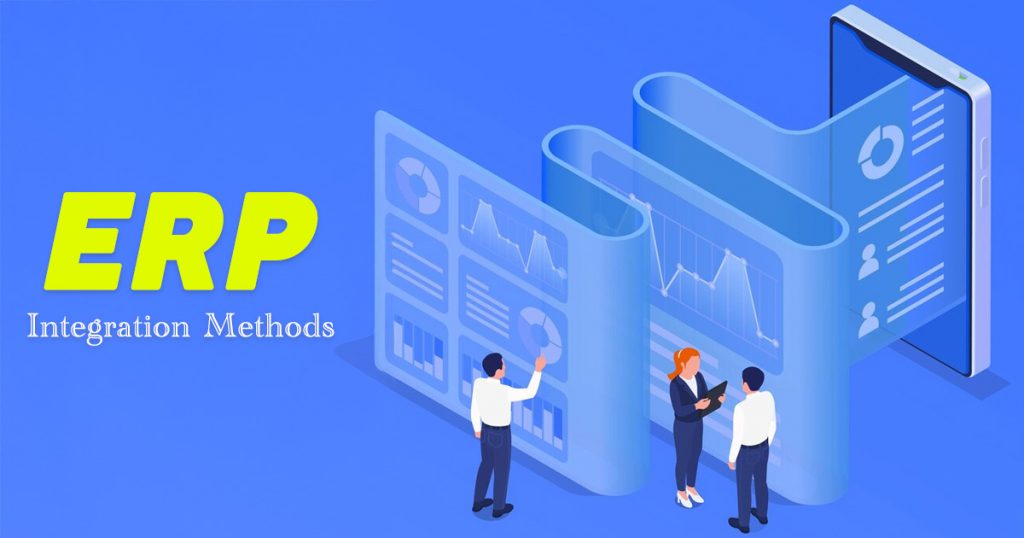ERP integration methods have revolutionized the way businesses manage their operations by connecting different systems and streamlining processes. Companies today rely heavily on seamless data flow across departments to stay competitive. Effective integration strategies ensure that business applications, from accounting to customer relationship management, work in harmony. Let’s dive into what ERP integration is all about and why it’s so important for modern businesses.
What Does ERP Integration Mean?
ERP integration connects an enterprise resource planning (ERP) system with other applications to create a unified flow of information across all business processes. This process eliminates silos by linking tools like supply chain management, human resources, and sales platforms.
Data no longer stays confined to one system but is shared across all relevant areas in real-time. Integration ensures that updates made in one system reflect everywhere, giving businesses a holistic view of their operations. It’s like creating a central nervous system for your organization where every part works together efficiently.
Why Is It Important?
Integrated ERP systems ensure that business functions communicate seamlessly. Disconnected systems lead to inefficiencies such as duplicate data entry, delays, and miscommunication. ERP and system integration solves these issues by creating a streamlined infrastructure.
Real-time updates allow teams to respond to customer needs quickly and effectively. For example, when inventory levels sync automatically with sales data, businesses avoid stockouts or overstocking. Integration also ensures compliance with regulations by centralizing data, reducing the risk of errors in financial reporting or audits.
Benefits of ERP Integration
ERP integration isn’t just a technical upgrade; it’s a way to transform operations. Here are the key benefits:
- Enhanced Data Accuracy
Manual data entry often results in errors that can disrupt operations and lead to costly mistakes. Integration eliminates the need for repetitive data input by automating the process. When all systems communicate, data remains consistent and reliable across platforms. - Real-Time Insights
Integrated systems provide a comprehensive view of business performance at any given time. Decision-makers no longer rely on outdated reports but can make informed choices based on current data. This agility is especially important in fast-paced industries. - Improved Efficiency
Integration automates time-consuming tasks like data entry and reporting. Employees can focus on strategic initiatives instead of administrative work. For example, order processing becomes smoother when ERP systems sync with e-commerce platforms. - Scalability
As businesses grow, their software needs evolve. An integrated ERP system accommodates this growth by allowing seamless addition of new applications or functionalities. This scalability ensures that businesses stay future-ready without overhauling their infrastructure. - Cost Savings
Streamlined operations lead to significant cost reductions. Automation reduces labor costs, and better resource allocation minimizes wastage. Integration also lowers IT maintenance expenses by reducing the complexity of managing disconnected systems.
Three Types of ERP Integration Methods
Different businesses have different needs, so choosing the right ERP integration strategy is crucial. Here are three common methods:
Native Integration
Native integration uses pre-built connectors provided by ERP vendors. These connectors are designed to work seamlessly with specific applications, offering a plug-and-play solution. Businesses benefit from reduced setup time and guaranteed compatibility. However, this method might not support niche or highly customized applications. For example, a popular ERP system might have a native integration for widely used CRMs but not for industry-specific tools.
Custom Integration
Custom integration involves developing unique connections between the ERP system and other applications using APIs or middleware. This approach is highly flexible, allowing businesses to meet their exact requirements. Custom integration can connect even the most specialized tools, creating a tailored solution for complex workflows. However, this method requires a higher investment of time and resources. It also demands skilled developers to build and maintain the connections.
Point-to-Point Integration
Point-to-point integration creates direct links between two systems, enabling data to flow without intermediaries. This approach is straightforward and effective for small-scale operations with limited systems to connect. However, as the number of connected systems grows, point-to-point integration can become difficult to manage. Maintaining numerous connections can create a tangled web that’s challenging to troubleshoot and update.
How ERP Integration Works
ERP integration relies on technology to ensure seamless communication between systems. The first step is identifying the specific data to be shared, such as customer orders, inventory updates, or payroll details. This data is then mapped to ensure it’s accurately transferred between systems.
Middleware or APIs act as bridges to facilitate data exchange. Middleware centralizes communication by acting as a hub where all data passes through, while APIs allow applications to talk directly to each other. For example, when a sale is made on an e-commerce platform, the order details are automatically sent to the ERP system. From there, the ERP updates inventory levels, notifies the warehouse, and reflects the transaction in financial records. This real-time synchronization reduces manual intervention and prevents delays or errors. Businesses can customize workflows to match their processes, ensuring that every department stays aligned.
Simplify Your Operations with ERP Integration
Effective ERP integration methods are essential for businesses aiming to streamline processes and enhance productivity. By connecting various systems and ensuring seamless data flow, companies can improve efficiency, reduce errors, and scale operations with ease. Native integrations offer convenience for standard needs, while custom and point-to-point methods provide flexibility for unique requirements.
Understanding which strategy suits your business is key to unlocking the full potential of your ERP system. Embrace ERP integration to stay competitive, improve decision-making, and drive long-term success.
